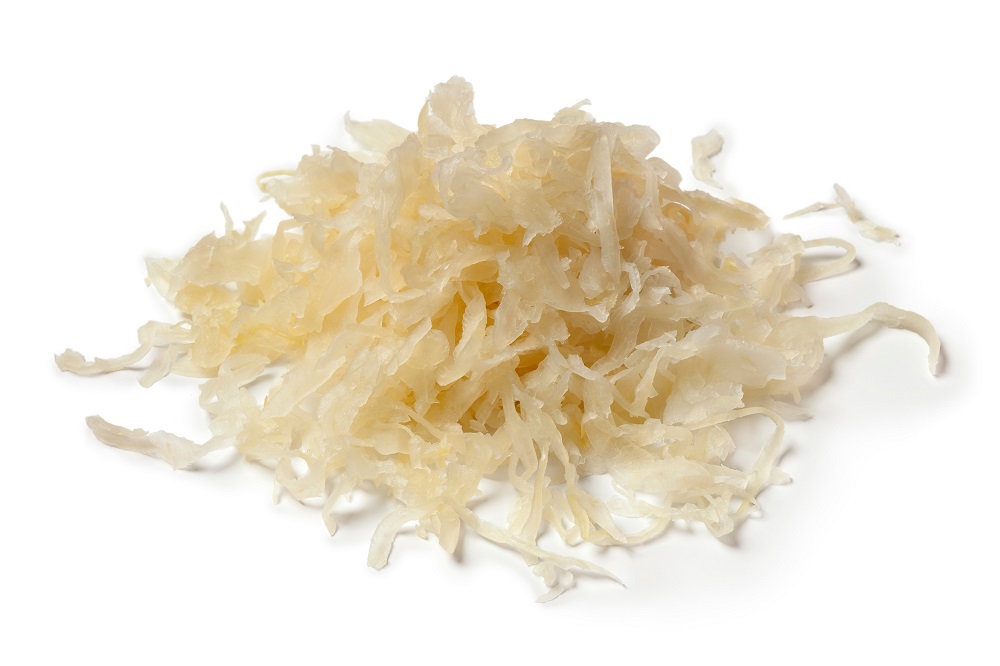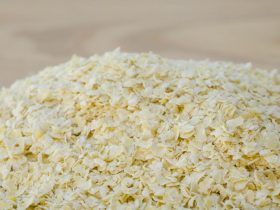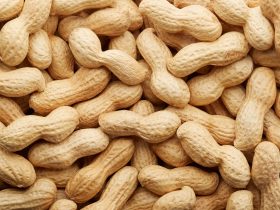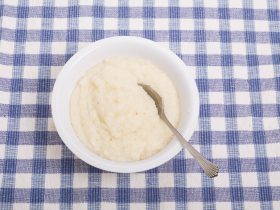Sauerkraut is a fermented dish of shredded cabbage and occasionally other vegetables. It presents a uniquely sour flavor that is often found to be in high demand in countries like Germany, the place of its origin1.
Because of its fermented nature, the question of sauerkraut’s particular shelf-life is often asked. At what point is the fermented cabbage no longer safe to eat?
If refrigerated and the fermentation-producing lactic acid bacteria are kept in check, sauerkraut can last up to three months so long as it has been correctly stored in the proper conditions. Keep in mind that this article primarily applies to the sauerkraut cabbage itself, and does not account for other additives that may be present, such as carrots or other produce.
How to Store Sauerkraut in the Pantry
While inadvisable, it is technically possible to store sauerkraut in the pantry, especially if it is of the pasteurized variety that no longer supports an active colony of fermenting bacteria.
In order to store sauerkraut in the pantry, you must first find a suitable spot to store the sauerkraut.
Ideally, a cool and dry corner of your cupboard or pantry free of any insects would allow the sauerkraut to last as long as possible if kept sealed. Ensure that this spot is also free of direct sources of light, especially that of sunlight.
Keep in mind that certain brands of sauerkraut are meant for refrigeration, and storing these brands in your pantry or cupboard will cause them to spoil or over-ferment very quickly. A good way to tell if the brand you have bought is safe for pantry storage is whether it was stored in a refrigerator prior to purchasing it.
If the brand you own is the correct type of sauerkraut, it is best to refer to the best-by date printed on the packaging, give or take a month.
How Long Does Sauerkraut Last in the Fridge?
The more common form of storage when concerning sauerkraut, choosing to refrigerate the fermented cabbage dish is by far the best method to extend its shelf-life.
Depending on the brand of sauerkraut you have purchased, or perhaps even made yourself, refrigerating it will slow down the fermentation caused by the bacterial cultures present in the container. You may notice that the sauerkraut’s flavor grows more sour at a slower rate, and that the formation of gas within the container is reduced2.

In order to store your sauerkraut in the fridge, simply leave in the container it was purchased in or place it in an air-tight resealable storage vessel. Leave the container deep within your fridge, away from anything that may absorb its distinct odor, such as bread or beans.
Stored properly, sauerkraut can last up to three months in the refrigerator before requiring disposal.
Can Sauerkraut be Frozen?
Yes, though this will either kill the fermenting bacteria cultures or stop their function entirely depending on the speed at which the sauerkraut has been frozen. If the sauerkraut is fermented enough to your liking, freezing is an excellent way to prevent any further consumption by these microorganisms.
In order to begin freezing sauerkraut, you will only need a resealable plastic pouch and a freezer capable of reaching the freezing temperature of 32°F.
Scoop the sauerkraut and some of its broth into your resealable plastic bags, separating them based on your desired serving size. By filling multiple bags with smaller amounts of sauerkraut, you will be able to defrost it without compromising the entire batch.
While filling the bags, leave a small amount of open space between the bag and the sauerkraut in order to account for the expansion of water once it freezes. This will prevent rupturing of the bag from within.
Place the bags of sauerkraut in the deepest part of your freezer, ensuring that they are far from any sources of moving air such as a fan or vent, as this will cause freezer burn. It is also wise to place them in such a way that they are not crushed beneath anything else that may be in your freezer.
Signs of Spoilage in Sauerkraut
Being a fermented organic dish, determining whether your sauerkraut has begun to spoil can be a confusing task.
The first and safest way to determine whether the sauerkraut has gone bad is an off-smell far unlike its actual pungent odor. If an alcoholic or even rotting odor emanates from the cabbage, it is best to dispose of it immediately.
Visually, sauerkraut cabbage may begin to deviate from its usual pale-green coloring. The shredded leaves can develop dark spots and streaks of off-color liquid. Should you notice this, it means that the cabbage is no longer safe for consumption.
Why Does Sauerkraut Become Unsafe to Eat After Expiring?
Food primarily spoils when exposed to either bacterial cultures or the open air, of which will chemically alter the texture and taste of the food. In the case of sauerkraut, the shredded cabbage has already been colonized by a friendly and safe-to-eat bacterial culture called LAB or lactic acid bacteria3.
If these bacteria are killed or their numbers are greatly reduced by heat, time, or other factors that kill bacteria, it is possible that other more harmful forms of microorganisms will begin to take their place. Unlike LAB, these fungi and bacteria produce toxins that are unsafe to eat.
These toxins present in the form of rotting odors and unusual changes in the look and feel of your sauerkraut.
What Factors Make Sauerkraut Expire Faster?
The factors that may contribute to your sauerkraut expiring more quickly are numerous, though there are a few more commonplace ones that one would be wise to watch out for.
If refrigeration-only sauerkraut is stored in a room temperature area, it is possible for the LAB culture to grow out of control and over-ferment your sauerkraut.
Apart from this, other cultures of bacteria and fungi may take root in the sauerkraut and overtake the LAB, essentially superseding them and spoiling the sauerkraut.
References
1. Farnworth, Edward R. (2003). Handbook of Fermented Functional Foods. CRC
2. Yu Wang 1, Jérôme Delettre et al. (June 2005) “Influence of cooling temperature and duration on cold adaptation of Lactobacillus acidophilus” UMR Génie et Microbiologie des Procédés Alimentaires
3. Vethachai Plengvidhya,§ Fredrick Breidt, Jr.,* Zhongjing Lu,¶ and Henry P. Fleming (October 2007) “DNA Fingerprinting of Lactic Acid Bacteria in Sauerkraut Fermentations”





Hi, I'm Dom
Dom Eats was started to help other people fall in love with food. While cooking can feel intimidating, it doesn't have to be.